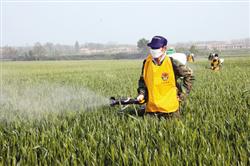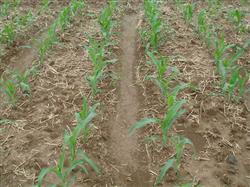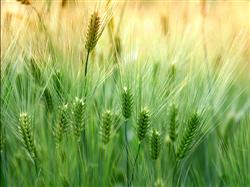When will the wheat trematode be controlled?

When will the wheat trematode be controlled? Please guide the control methods of wheat trematodes can refer to the following methods: first, occurrence characteristics of wheat midges have formed a close symbiotic relationship with the growth and development of wheat in the long-term survival of nature. its unearthed, pupation, Eclosion, spawning, hatching and other growth and development stages are always consistent with the growth and development of wheat, that is, the pupation of wheat midge at booting stage. The fluke emerges at the heading stage and the larvae hatch at the early filling stage of wheat. In other words, as long as wheat can survive, trematodes can survive. The area and scope of occurrence is large, basically throughout the winter wheat producing areas of the country, once the occurrence of poor prevention and control will result in a serious reduction in yield or even unable to form a yield, must not be taken lightly. Its harmful characteristics are as follows: 1. The individual is small: 30 wheat midges can be held in one grain. 2. Strong concealment: pupation can be seen directly in the soil surface for only one week a year, and hidden in the soil and wheat grains in the rest of the year, which is difficult to find. 3. Destructive: if 3 wheat trematodes are drilled into a wheat grain, the wheat grain will be sucked dry, in other words, if a wheat trematode is drilled into the wheat grain, the wheat pulp will be sucked off. 4. Stubbornness is outstanding: wheat midge can survive in the soil for 6 or 12 years, and every year a group of larvae can not be harmed in the soil, in order to maintain its population reproduction. 5. The critical period of control is short: the pupa period is 1 week and the adult stage is 3 days. These two links are also the weakest links in the survival of trematodes. Once the prevention and control is not timely, it will often lead to a reduction or serious reduction in production. 2. grasp the appropriate period and efficient control in view of the above-mentioned characteristics of wheat trematode, it is suggested that all localities should make early deployment and early mobilization, effectively overcome the idea of paralysis, and highlight the "strategy of paying equal attention to the control of pupa and adult stage". Grasp the following two control links: 1. It is all on the soil surface when spraying poisonous soil in the pupal stage to control the pupation of wheat trematode larvae. At this time, spreading poisoned soil on the soil surface is the best time to eliminate trematodes. As the seedling condition of wheat is generally weak this year, the development progress of trematodes will be postponed, and the development period of trematodes will also be postponed with wheat. All localities should strengthen cooperation with local news media on the basis of accurate prediction and forecast, do a good job in propaganda lectures on prevention and control techniques, and guide farmers to do a good job in prevention and control work in key periods. At present, especially the lack of pesticides used to control the pupae of midges, which makes it difficult for the majority of farmers to choose, and aggravates the phenomenon of misuse and abuse of drugs. Summing up the prevention and control experience in recent years, trematode pupa can be used with 1.5 kg of 2.5% methyl isosalidophos granules produced by Hubei Tianmen Yipu Agricultural Chemical Company, or 600 grams of Huayang brand 5% chlorpyrifos granules produced by Shandong Huayang Pesticide Company, and 25 kg of toxic (sand) soil, which is evenly scattered on the surface of the wheat field. According to the production requirements, the above two kinds of granules are processed into powders for spreading poisonous soil for the control of midge pupae, and do not spread with dew when spreading poisonous soil to avoid causing drug damage and affecting the efficacy of wheat leaves. At the same time, the poisonous soil scattered on wheat leaves should be bounced on the ground with a broom and other instruments to give full play to its efficacy. Varieties of highly toxic and highly toxic pesticides are prohibited. It is necessary to unify the organization, command, and supply of medicine, mobilize farmers to unify time, unified prevention and control, or household-by-household unified time prevention and control, and earnestly do a good job in unified prevention and control and professional prevention and control work. At the same time, we should do a good job in the fight against counterfeiting of pesticides. Second, from the end of April to the first ten days of May, the adults of wheat begin to Eclosion and fly to the wheat ear to lay eggs from heading to the early stage of flowering and filling. At this time, spraying is the key period to eliminate adults before spawning. It can be sprayed with 1500 times of cypermethrin or 1000 times of dimethoate, or supposedly (imidacloprid + dichlorvos + cypermethrin), or a reasonable mixture of imidacloprid (acetamiprid) and dichlorvos (cypermethrin, dimethoate) to control wheat aphids at the same time. It is emphasized that spraying thoroughly, not sparing water and medicine, in order to achieve the goal of effectively controlling the number of adult population and spawning, not only plays a key role in controlling the harm in the current year, but also plays a very important role in controlling the number of insect sources in the following year. Click to get more wheat planting technology click to get more grain planting technology
- Prev

How to manage summer corn seedlings?
How to manage summer corn seedlings? Please give detailed guidance on summer maize seedling management in the following aspects: 1. Check the seedlings and replenish them. After emergence, you should often check the seedlings in the field, and replant or transplant in time when you find that the seedlings are missing. Lack of seedlings can leave double seedlings on both sides of broken ridges, and more lack of seedlings can make good seedlings when corn has 2 to 3 leaves.
- Next

What methods are there to control wheat trematodes?
What method does wheat trematode have to control? Please guide the prevention and control of wheat midge by referring to the following methods: 1. Chemical control: the best control period is the pupa stage, generally using 50% phoxim EC or 40% methyl isophos EC 200kg 250ml plus 5 kg water to spray 25 kg fine soil per mu, or 3% phoxim per mu.
Related
- The first cup of black tea in spring, the flavor and history of tea gardens in Kenya, Africa
- The computer can not only choose potatoes, but also grow tea rice. AI will grow winter oolong tea champion.
- It is not only the inflated tea bitten by insects, but also engraved with the four seasons tea in Beipu.
- The Oriental Beauty Tea Festival in Zhuxian County takes the stage at the weekend to experience the plus-size feast of oil tea.
- & quot; Oriental Beauty Tea & Exploration of Emei in Hsinchu, the hometown of quot;
- The new variety of strawberry "Tainong 1" dessert is the first choice with mellow aroma. Crimson gorgeous
- History of Tea in Taiwan: from Wild Inner Mountain to Export Tea Garden
- Two types of Taiwan Oriental Beauty Black Tea won the British three-Star Award for Childhood Tea Xiang Zhang Jiaqi changed from pilot to champion tea maker.
- Banana species and varieties: the planting history of Taiwan Xianren banana and dwarf banana is long, is banana disease resistant?
- Coffee planting Technology: Qianjie Coffee from Seedling to harvesting

